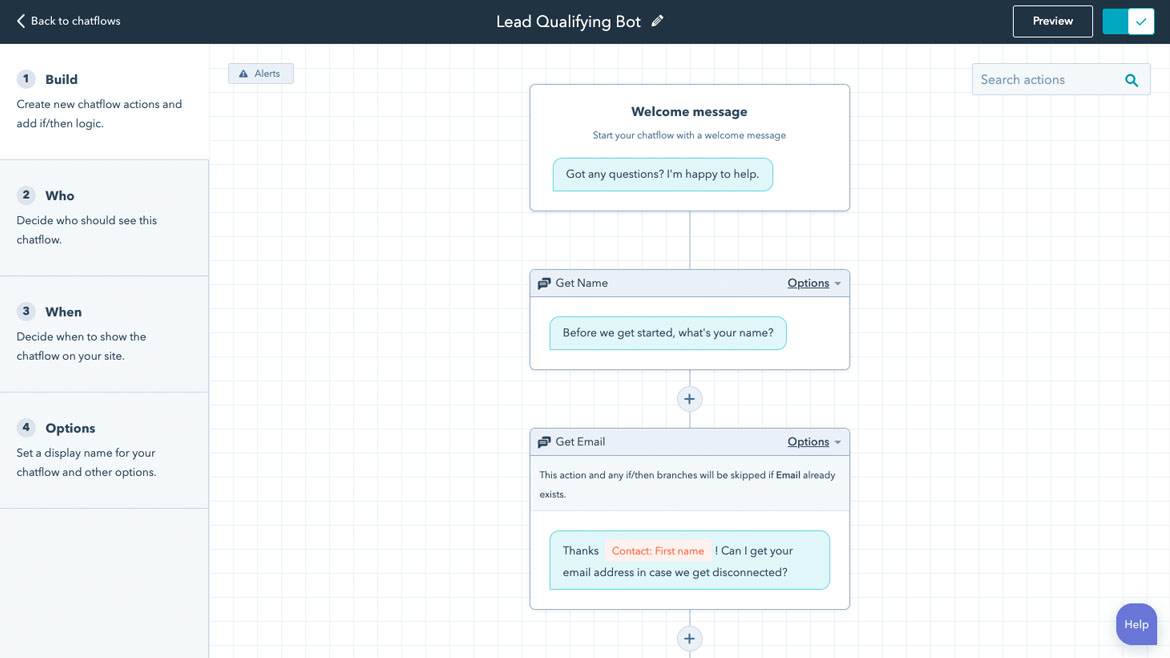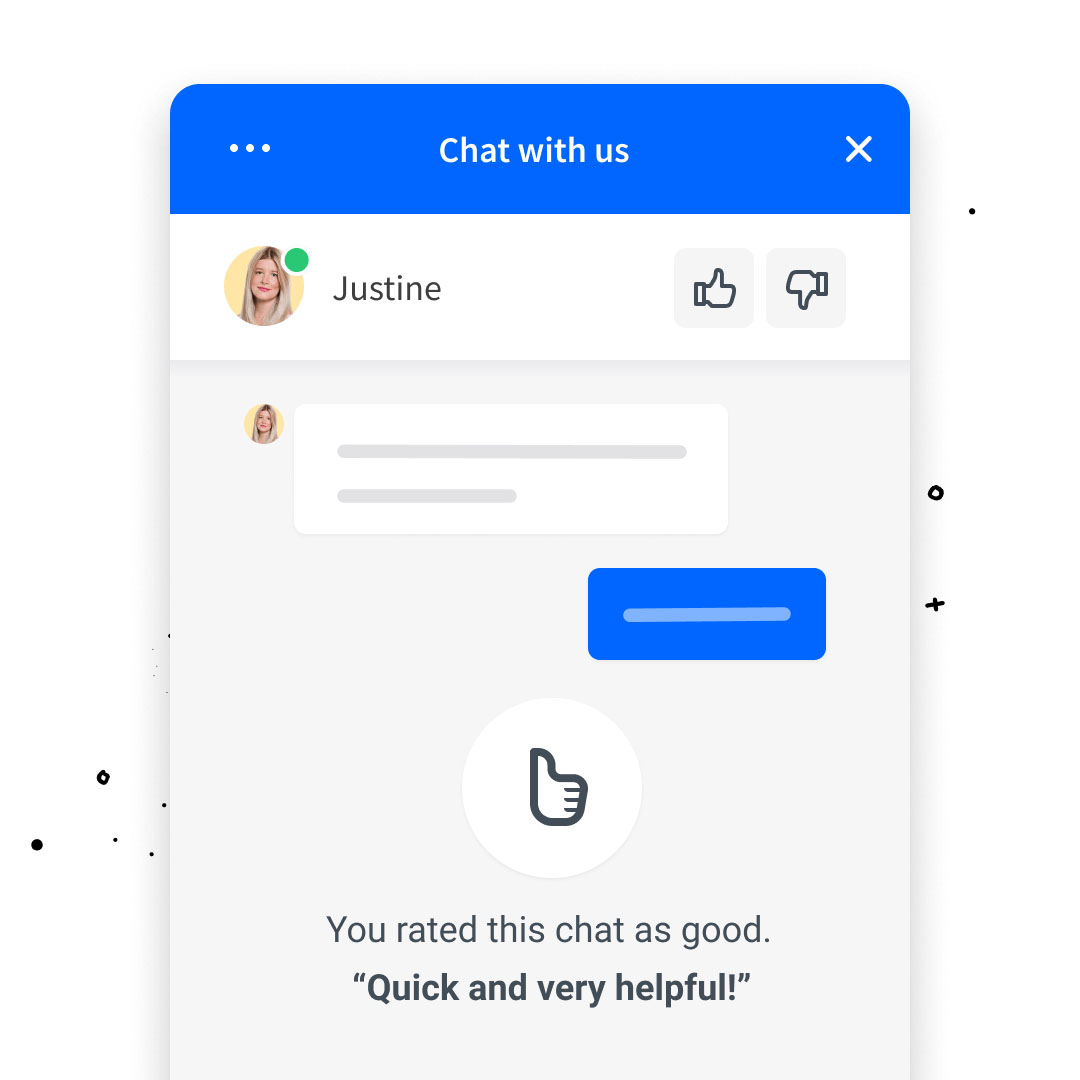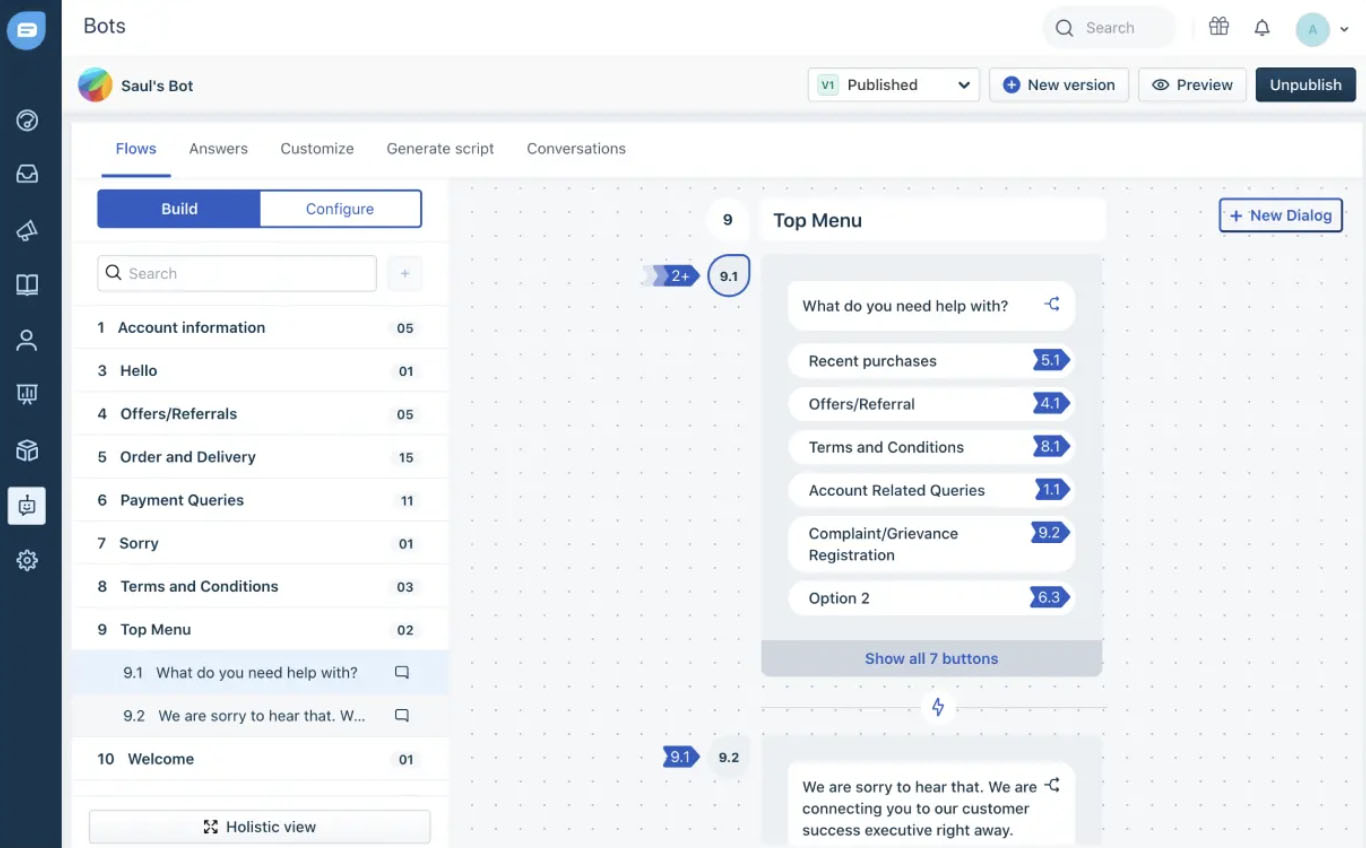Chatbots are artificial intelligence (AI)-based software designed to interact with humans using automated responses. Live chat, on the other hand, refers to direct communication between human agents and customers. While both services are on-brand messaging solutions, live chat is human-driven, and chatbots are conversational tools. Read our chatbot vs live chat guide to determine which is better for your business, their pros and cons, as well as how they work.
- Chatbot: Better for responding to routine inquiries and handling simple tasks in real time
- Live chat: Better for managing complex concerns needing tailored support
When comparing live chat vs chatbot, factor in your business operations and consider your call volume, product offerings, and available resources. The cost advantage would vary for each business.
Chatbot vs Live Chat at a Glance
Chatbot | Live Chat | |
|---|---|---|
Best For | Businesses looking for a cost-effective, round-the-clock solution | Businesses managing complex concerns requiring case-to-case support |
Monthly Starting Price | Free options; paid services start at around $20 | Free options; paid services start at around $15 per agent |
Business Hours | 24/7/365 | Business hours |
Staffing Requirements | Low | High |
Simultaneous Case Capacity | Unlimited | Limited (two to three per agent) |
Maintenance | Requires periodic knowledge optimization and configuration updates | Requires staff, training, and infrastructure monitoring |
Scalability | Immediate and cheap (programmable) | Moderate to lengthy (requires human resource, training, and protocols) |
Response Time | High (instant response) | Moderate (depends on complexity and agent capacity) |
Ease of Setup & Use | Easy | Varies |
The Difference Between Chatbot vs Live Chat
The key difference between chatbot vs live chat lies in who is handling the conversation. Live chat involves real-life sales or customer support representatives taking inquiries and processing orders in real time. On the other hand, chatbots are AI applications that automatically respond to customer queries without human interaction.
Maximizing chat technology helps businesses save money and resources while improving customer relations. Both solutions aim to facilitate rapid, contactless support but operate differently. Live chat excels in tailored human interaction, while bots are great for speedy service delivery.
How Chatbots Work
Chatbots use machine learning systems that provide predefined responses or pre-programmed scripts. It responds instantly to inquiries and makes personalized product suggestions based on their profile and purchase history. They provide information and process simple tasks without needing human intervention. It doesn’t require any action from your customers, like downloading and installing software.
Pros & Cons of Chatbots
| PROS | CONS |
|---|---|
| Available 24/7 | Limited comprehension and capabilities when dealing with complex issues or irate customers |
| More affordable than using live agents | Provides generic, impersonal support |
| Provides established response times | Requires deployment and configuration |
How Live Chat Works
Live chat lets your customers interact with your company’s human agents in real time. It’s an online communication and messaging system that can be applied to different media platforms, such as your website, applications, and social media channels. Like chatbots, it doesn’t require download or installation and appears at the bottom right-hand of the screen.
Pros & Cons of Live Chat
| PROS | CONS |
|---|---|
| Facilitates personalized, meaningful conversations | Requires continuous staffing, training, and infrastructure development |
| Increases brand trust and reliability | Bound by the availability of agents and representatives |
| Agents can simultaneously manage multiple inquiries or conversations | Human agents are more expensive than chatbots |
When to Use Chatbots
Chatbots can be used in different ways, from marketing campaigns to customer support and sales. They are often used to provide automated customer support for routine tasks and service inquiries. This automated tool lowers operational costs while allowing businesses to help customers with questions or issues. Chatbots allow companies to keep service teams lean, gaining greater IT and labor savings.
Automate Common Inquiries
Chatbots provide customers with basic support, information, and lead engagement. It provides immediate response to frequently asked questions and minimizes queue time. They’re conversational tools you can deploy to perform routine tasks efficiently so agents can focus on high-level, complex activities. This is ideal for small businesses with limited financial and human resources looking to provide round-the-clock visibility and support.
Generate Customer Feedback
Chatbots can be programmed to request customer feedback after interaction, allowing businesses to capture clients’ thoughts after a purchase. Time your feedback request immediately after closing an engagement so clients can share their experiences. Chatbots let customers rate your services and leave their feedback.
Improve Lead Generation
Chatbots can help educate website visitors, create awareness of promos and campaigns, and support their decision-making process. Minimize cart abandonment by using bots to answer questions in real time, take orders, and assist clients in selecting the appropriate products and services. Chatbots allow agents to gather customer information and resolve common questions without live human agents.
When to Use Live Chat
Today’s buyers want informative, real-time engagement, and live chat responds to this demand by instantly connecting customers with your support teams. Live chat creates an omnichannel experience for your website visitors, reducing bounce rates and increasing opportunities for upselling and cross-selling. Live chat solutions are an excellent fit for companies looking to respond quickly to urgent customer concerns and requests.
Resolve Complex & Technical Concerns
Live chat support offers personalized, nuanced experiences because human agents can understand and discern situations on a case-to-case basis. Live agents can handle complex inquiries requiring critical thinking and innovative problem-solving better than automated software.
Increase Agent Productivity
Unlike phone interaction, live chat allows agents to manage multiple customers simultaneously. While call center agents take one call at a time because it requires verbal communication, live chat agents can communicate with multiple customers. While complicated questions require more attention, agents can simultaneously handle common inquiries with prepared scripts and responses.
Measuring agent productivity and overall contact center performance is crucial to ensuring quality customer service and efficient operations. Call center metrics enable businesses to measure performance and identify areas of improvement. Here are key call center metrics and key performance indicators (KPIs) you need to know about.
Gain Advantage Over Competitors
Gain a competitive advantage by providing customers with real-time support. Startups and small businesses with limited resources can use live chat to give better support than competitors. Live chat delivers proactive assistance and contextualized support in a business landscape that puts a premium on customer experience.
Chatbot & Live Chat Providers
Live chat and chatbot services are tools companies of all sizes use to improve operations and customer service. The most popular service providers offer both solutions, often together or as features in a service package. They offer tools for developing or customizing chatbots to suit each customer base through templates.
Not what you’re looking for? If you’re interested in more live chat service providers, check out our in-depth buyer’s guide on the best managed live chat services for small businesses.
Frequently Asked Questions (FAQs)
Yes, live chat and chatbots complement each other to provide a high-quality customer support experience. Chatbots can serve as the first line of support, handling common inquiries and providing immediate responses. When the artificial intelligence (AI) recognizes the case requires human intervention, complex inquiries can be elevated to agents. After an interaction, chatbots can take the lead in following up and sending post-conversation surveys and resources.
The answer to which is a better solution depends on your business needs. Messaging platforms are excellent options for small to medium enterprises looking to provide 24/7 support at reasonable rates. Larger companies or industries handling sensitive or complex concerns may opt for live chat or answering services for one-on-one interaction.
When comparing chatbot vs live chat pricing, chatbots are generally more cost-effective than live chat solutions because they are automated, requiring fewer human agents. The annual cost of a chatbot subscription is typically far less than the wages of a single customer support agent. This translates to less staffing, IT equipment, and operational and business services, such as payroll and tech teams.
Bottom Line
Now that we’ve discussed live chat vs chatbot, we know both options contribute to providing speedy, responsive customer service. Chatbots provide immediate responses to a large number of queries, and live chat provides a personalized touch to human interactions. If you’re interested in using both solutions as part of a phone system, check out our list of best call center phone systems today.





